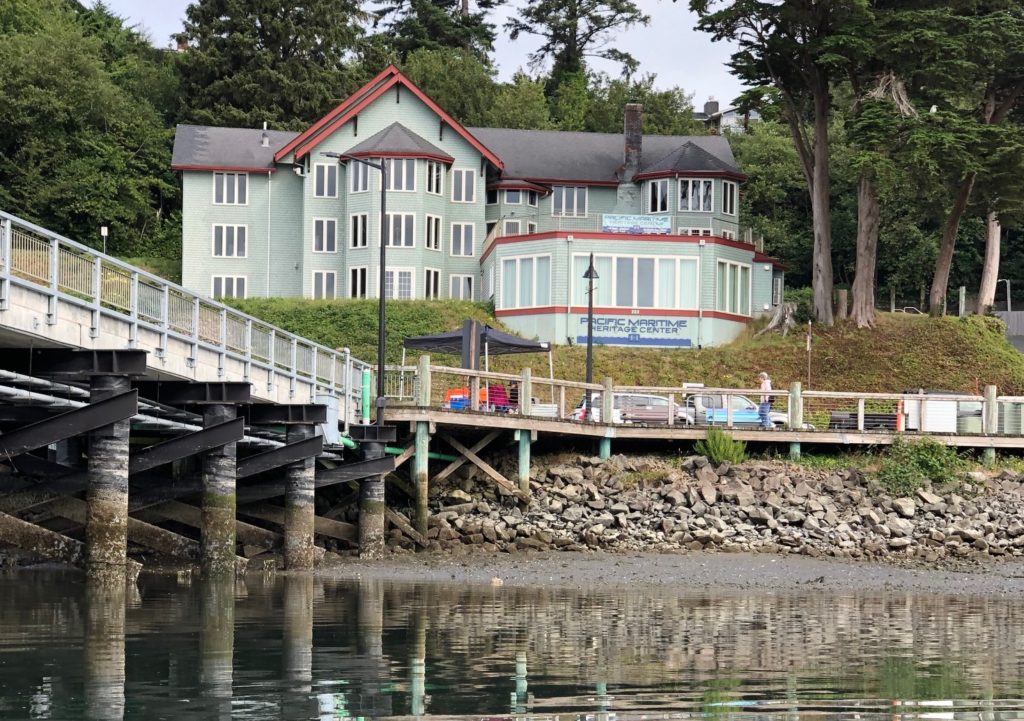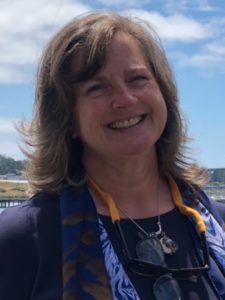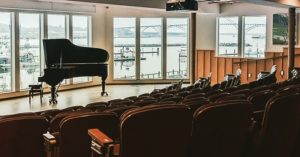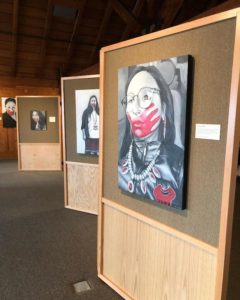
By OREGON ARTS WATCH
NEWPORT — When guests sit down to the Crab Krack hosted by the Pacific Maritime Heritage Center on Sunday, it will be thanks to the generosity of countless strangers – fishermen, artists, businesses, and, of course, the visitors and members who support the center.
Like nonprofits everywhere, the maritime center exists largely through the largesse of the community. Given a setting that is, without exaggeration, among the finest anywhere on the Oregon Coast, attracting that kind of support shouldn’t be too difficult.
But it is.
After nearly 20 years of fundraising and renovations, the Newport center still struggles to draw people through its doors. This despite the fact that the 30,000-square-foot French chateau-style building boasts three floors of unparalleled bayfront views, a private theater, six gallery spaces, and, rumor had it, its own ghost.

“We’re coming out of Covid fog,” said Lincoln County Historical Society’s executive director, Susan MG Tissot. “The volunteer bank isn’t what it was. We’re not flush with a ton of cash. We struggle with people finding us; we struggle with identity, a branding problem. People don’t understand who operates this, let alone who is in the building.”
For the record, the center is owned and operated by the Lincoln County Historical Society, which also operates the Burrows House, a museum; and the Log Cabin, which houses the research library and archives. The center was designed to reflect the story of the working bayfront and the fishing fleet that calls it home.
But it’s always been something of a bumpy ride. In 2004, when the historical society bought the building for what now seems the ridiculously low price of $240,000, at least one board member suggested they’d be better off burning the place. And true, it took millions of dollars of work and nine years before the historical society could even open its doors.

The center was built on the foundation of a mansion that dated from the 1880s, then burned in 1923 and was rebuilt two years later. The building underwent extensive remodeling in the 1970s and ‘80s, operating as a restaurant and nightclub. After it was shuttered in 1999, it sat empty, changing hands a few times before the historical society bought it.
It opened in 2013 and has since hosted art exhibits, lectures, concerts, and private events.
Tissot took over last May.
“This building is why I took the job,” she said. “It has so much potential. But for this organization to survive, we have to be dynamic. We have to be relevant and accessible.”
Accessibility is part of the problem. The building sits on a hill, giving the impression that getting to it may take some work. Not so. You can drive right to the front door. But in the interest of making it easier for walkers, the center recently invested $240,000 in a new stairway.
“Look at the beautiful staircase we built,” Tissot said. “But a lot of people will say, ‘I don’t want to climb that,’ not realizing we have parking up here. That’s a huge issue for us. They are walking the bayfront, they get down to this end — the far end of tourism stuff — and they kind of go, ‘Eh, I don’t want to go up the hill.’ We have parking up here and it makes it easy to get to the front door, but people don’t realize that.”
Tissot’s first order of business when she signed on was getting the empty and unfinished mezzanine renovated.
“Because it is one of the first things one sees when entering the building and because it was a great opportunity for a changing gallery space, I pushed for us to remodel the space,” Tissot said. “I jokingly call its staircase ‘the poor man’s Titanic.’ It is such a pretty entrance, I visualize Leo DiCaprio standing on the landing next to a clock.”

The mezzanine is home through May 7 to the visiting exhibit Portraits in Red, paintings of missing and murdered indigenous people, including four from Siletz.
Next up, they plan to renovate 1,700 square feet of space for a multi-purpose room – with views, of course.
Upcoming exhibits include Lincoln County 400, featuring the work of eight drone photographers and set to open March 10. The Curious World of Seaweed, an exhibition with an art and science theme by San Francisco artist and author Josie Iselin, opens May 25. Tissot said the exhibit will include underwater kelp footage from a research project being done by Jim Burke, director of animal care at the Oregon Coast Aquarium, and colleagues.
“It will be like walking through a kelp forest up on the mezzanine.”
After a two-year hiatus — thanks to the pandemic — the Crab Krack is Sunday at the Agate Beach Best Western in Newport. (“We don’t want the crab juice in the center,” Tissot said.) The event includes one whole crab per person — containers for leftovers provided — plus the usual side dishes, live music, silent and live auctions, and a no-host bar.
“We’re not making money on the tickets,” Tissot said, noting the maritime center’s tickets at $65 and $75. “We purposely kept tickets reasonable, because we didn’t want to keep people from participating.
“The idea is to raise money, but also to build relationships. We need support. We need people who want to come here, buy memberships, give money for tax reasons. We need the money to keep going. But the big thing is, we need people to participate. If we spin out all these programs and no one comes, why are we doing this?”
- This story was originally published Feb. 11 by our news partner Oregon ArtsWatch. It is supported in part by a grant from the Oregon Cultural Trust, investing in Oregon’s arts, humanities and heritage. For more arts news coverage go to Oregon ArtsWatch



$65 to $75 tickets (per person) is a significant amount of money for quite a few people in Lincoln county in 2020 the US census found 14.4% of Lincoln county residents to live at or below the federal poverty level and 20.4% of minors under 18 years, higher then the state average. Does this center offer free admission for school trips or kids attending schools in Lincoln county?
What demographic is the “Pacific Maritime Heritage Center” targeting? Well off commercial fisherpeople & their families? Tourists? Sounds like what the management most wants is money, not non-monetary community participation, except perhaps to fill whatever needs for volunteers they have.
Tickets for entry of the museum are $10 per adult, $5 per teen and free for 0-12, according to their website. The prices mentioned in this article refer to the fundraising event.